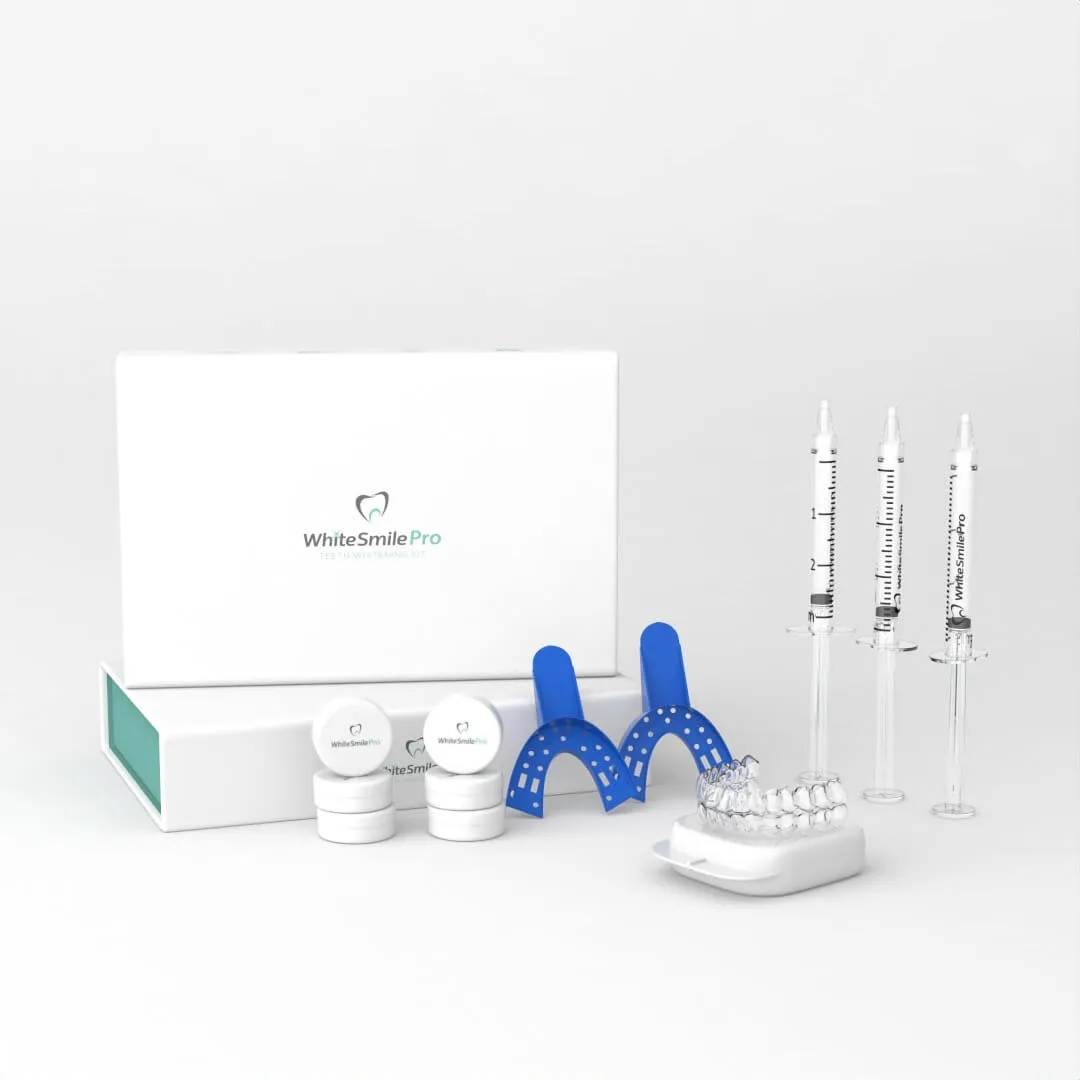What are Teeth Whitening Trays
Teeth whitening trays are a popular and effective method for achieving a brighter, more confident smile. These trays, often made of flexible plastic, are designed to hold a whitening solution in close contact with your teeth. They work by using a bleaching agent, typically containing hydrogen peroxide or carbamide peroxide, to break down stains and discoloration on the surface of your teeth. The tray ensures the whitening solution stays where it needs to be, maximizing its effectiveness while minimizing contact with soft tissues like your gums. The convenience and relative affordability of whitening trays make them a favored choice for those looking to enhance their smile from the comfort of their own homes.
Types of Teeth Whitening Trays
There are several types of teeth whitening trays available, each offering a different level of convenience, cost, and effectiveness. Understanding these variations can help you choose the best option for your specific needs and budget. From professional custom-fit trays to readily available over-the-counter options, the landscape of teeth whitening trays provides choices for various users.
Custom-Fit Trays
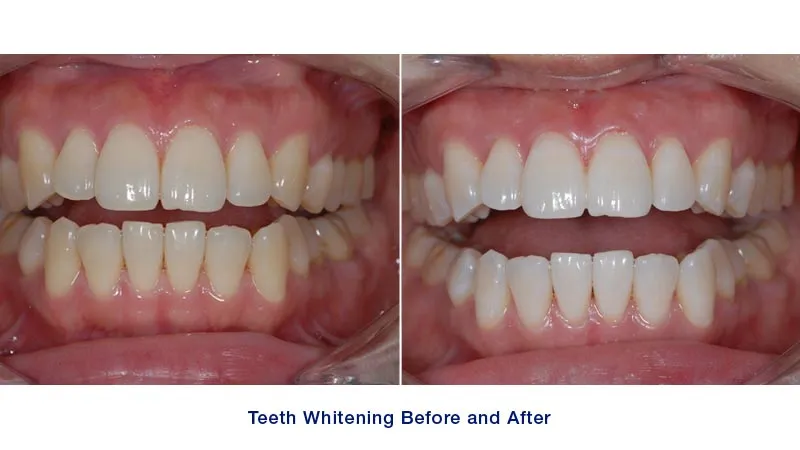
Custom-fit trays are made by a dentist to perfectly fit the unique contours of your teeth. This ensures the most accurate application of the whitening gel, reducing the risk of the solution leaking onto your gums and causing irritation. The dentist takes an impression of your teeth, which is then used to create a custom tray. While more expensive than other options, custom trays offer the best fit and are often the most effective, as they facilitate even distribution of the whitening agent.
Pre-Filled Trays
Pre-filled trays are disposable trays that come pre-loaded with a whitening solution. They are convenient because you simply place them in your mouth and wear them for the recommended time. These are generally less expensive than custom trays and are available in various strengths of whitening agents. However, because they are a one-size-fits-all design, they may not offer as precise a fit as custom trays, potentially leading to less effective whitening or increased gum sensitivity.
Over-the-Counter Trays
Over-the-counter (OTC) trays are readily available at drugstores and online retailers. They are typically a one-size-fits-most design, making them the most affordable option. However, the fit may not be ideal, and the whitening agent concentration is often lower than that used in professional treatments. Results may take longer to appear with OTC trays, and the effectiveness can vary depending on the individual and the type of stains present. It is essential to follow the instructions provided with OTC trays carefully to avoid potential issues.
Choosing the Right Whitening Tray
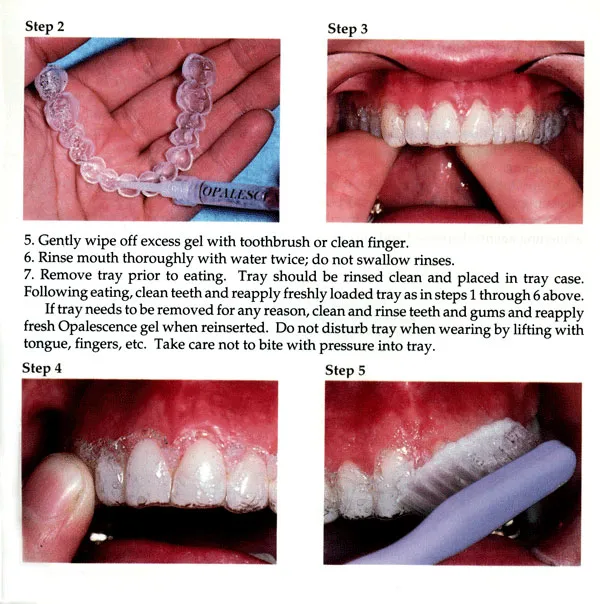
Selecting the right teeth whitening tray depends on your individual needs, budget, and the level of whitening you desire. Consider factors such as the severity of your tooth discoloration, your sensitivity to bleaching agents, and how quickly you want to see results. Consulting with your dentist is always a good idea, as they can evaluate your oral health and recommend the most appropriate whitening option for your specific situation.
Considerations for Tray Selection
When choosing a whitening tray, evaluate the quality of the material, ease of use, and the concentration of the whitening agent. Trays that fit snugly and comfortably are more likely to provide even whitening. Be aware that stronger whitening agents can cause more sensitivity. Researching different brands and reading reviews can help you make an informed decision. Moreover, make sure the whitening agent is approved for dental use. Always check the expiration date of the product and store it as instructed.
Consulting Your Dentist
Before starting any teeth whitening treatment, consult your dentist. They can examine your teeth for underlying dental issues like cavities or gum disease, which could be exacerbated by whitening. Your dentist can also offer professional advice on the best type of tray for your needs and the appropriate concentration of whitening agent. Professional guidance helps ensure your safety and maximizes your chances of achieving the desired results without damaging your teeth or gums.
How to Prepare Your Teeth Whitening Trays
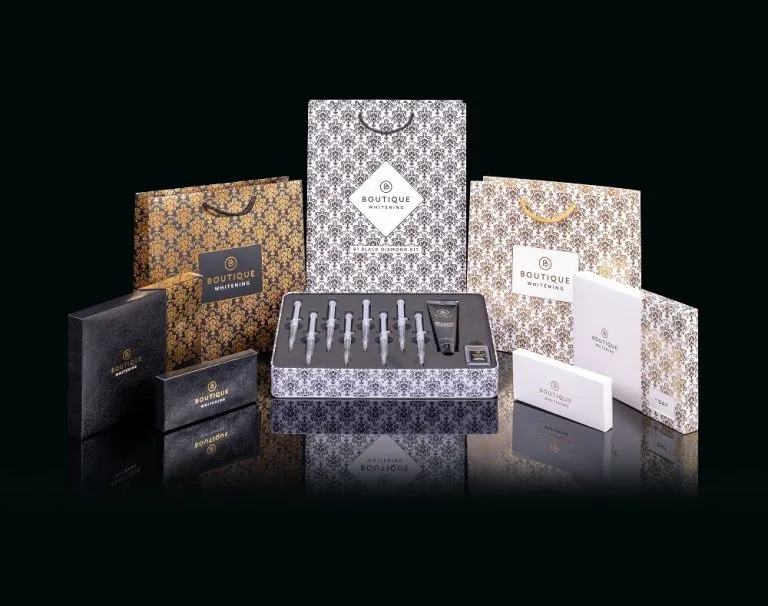
Proper preparation is key to ensuring the effectiveness and safety of your teeth whitening treatment. It involves a few simple steps, from cleaning your teeth to correctly applying the whitening gel. Following these steps will help you get the most out of your whitening trays and reduce the risk of any potential side effects.
Cleaning Your Teeth
Before applying the whitening trays, brush and floss your teeth to remove any food particles or plaque. This ensures the whitening gel can effectively reach the surface of your teeth. Rinse your mouth thoroughly with water, but avoid using mouthwash immediately before whitening, as some mouthwashes can create a barrier that prevents the whitening agent from working. Make sure your teeth are clean and dry before proceeding to apply the gel.
Applying the Whitening Gel
Apply a small amount of whitening gel to the tray according to the manufacturer’s instructions. Avoid overfilling the tray, as this can lead to the gel leaking onto your gums and causing irritation. The amount of gel needed will vary depending on the type of tray and the concentration of the whitening agent. Usually, a thin line of gel along the inner surface of the tray where it contacts your teeth is sufficient. Use the appropriate amount of gel to avoid waste.
Inserting the Tray

Carefully insert the tray into your mouth, ensuring it fits snugly over your teeth. Gently press the tray to spread the gel evenly. Remove any excess gel that may have oozed out. Follow the instructions provided with your specific whitening tray regarding the duration of wear. It’s crucial to avoid any pressure or discomfort while inserting the tray, and do not leave it in for longer than the recommended time to avoid side effects.
The Proper Way to Use Whitening Trays
Using teeth whitening trays correctly involves adhering to specific guidelines for duration and frequency of use. Following these recommendations ensures optimal results while minimizing potential risks. Consistency and adherence to the instructions are essential for safe and effective teeth whitening.
Duration of Use
The duration for wearing your teeth whitening trays varies depending on the type of tray and the concentration of the whitening agent. Custom trays are often worn for several hours a day or overnight. Over-the-counter trays may require shorter wear times, such as 30 minutes to an hour. Always follow the manufacturer’s instructions or your dentist’s recommendations. Do not leave the tray in for longer than recommended, as this can increase the risk of tooth sensitivity and gum irritation.
Frequency of Use
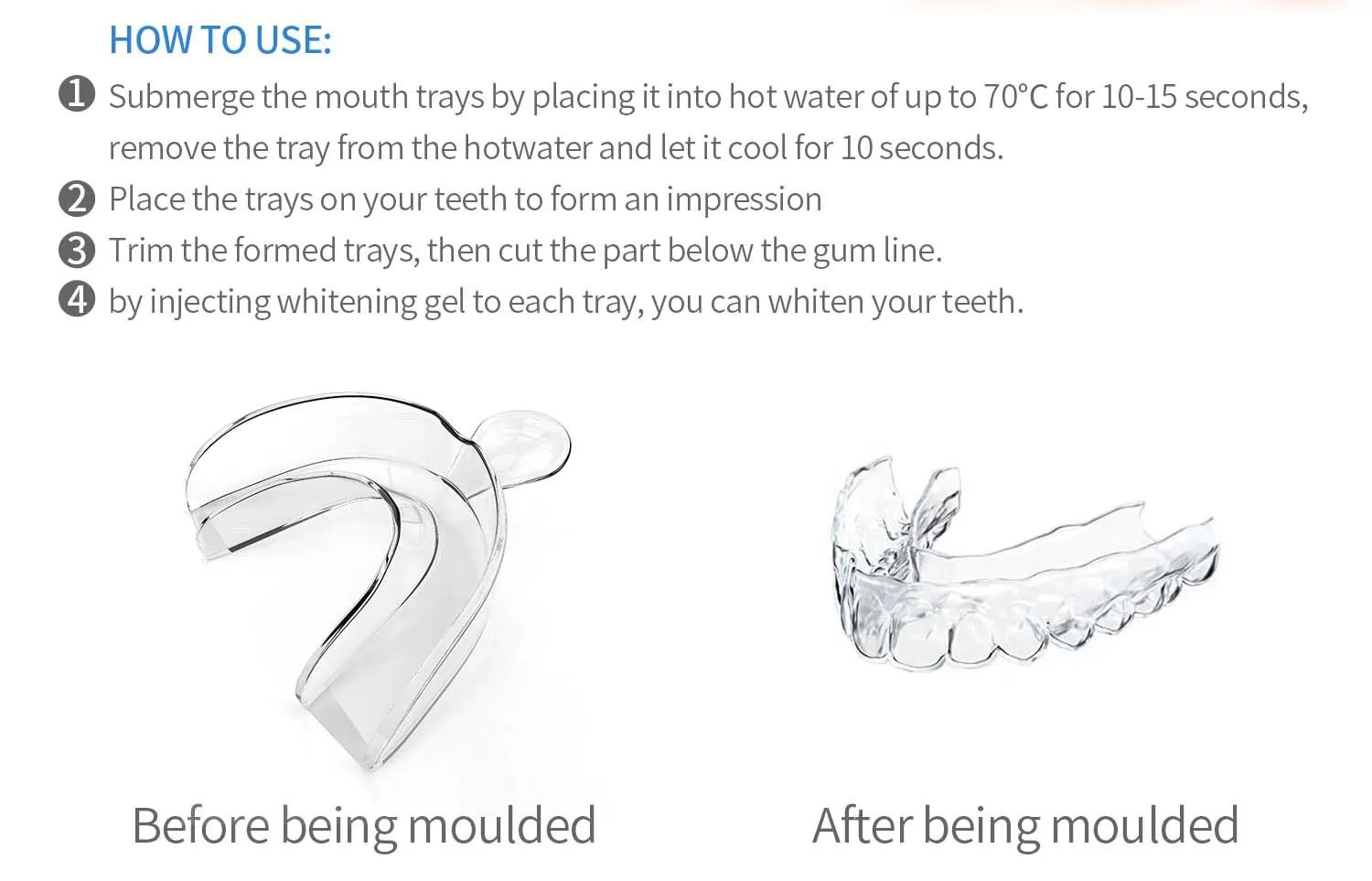
The frequency of use also depends on the type of tray and the desired results. Many whitening tray treatments are designed to be used daily for a period of one to two weeks. Some may require periodic touch-ups to maintain the results. It is essential to follow the instructions provided by your dentist or the product manufacturer. Overuse can lead to increased sensitivity and gum problems. Avoid excessive frequency to protect your oral health.
Aftercare Instructions
Proper aftercare is crucial to maximize the results of your teeth whitening treatment and maintain a healthy smile. Rinsing your mouth and avoiding staining foods and drinks are vital components of your aftercare routine. Taking these steps will help prevent the re-staining of your teeth and contribute to the longevity of your brighter smile.
Rinsing Your Mouth
After removing the whitening trays, rinse your mouth thoroughly with water to remove any remaining gel. This helps prevent any residual bleaching agent from irritating your gums. Avoid swallowing the gel. You can also gently brush your teeth to remove any remaining residue, but wait at least 30 minutes after the treatment to allow the enamel to re-harden. Follow the routine to maintain oral hygiene after each treatment.
Avoiding Staining Foods and Drinks
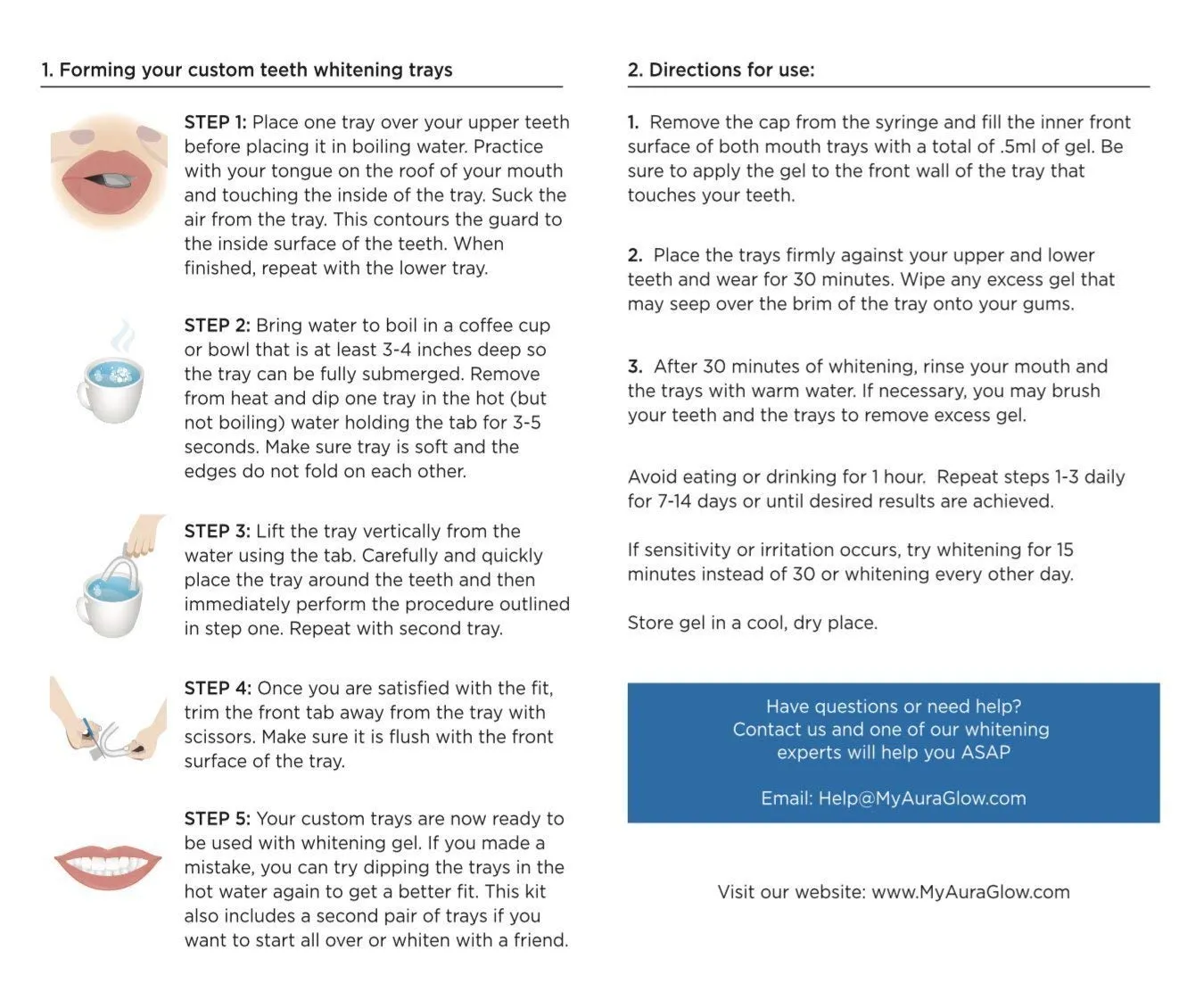
During and immediately after your teeth whitening treatment, it’s important to avoid foods and drinks that can stain your teeth. This includes coffee, tea, red wine, dark sodas, and heavily pigmented foods like berries and curries. Staining foods can easily penetrate the enamel pores right after whitening, negating some of your progress. Consider using a straw for beverages to minimize contact with your teeth. Maintain a diet with light-colored foods and drinks to protect your results.
Maintaining Your Results
Maintaining the results of your teeth whitening treatment requires ongoing care and attention to your oral hygiene. This includes regular brushing and flossing, as well as periodic touch-up treatments. Proper maintenance ensures a long-lasting, bright smile.
Potential Side Effects and Solutions
While teeth whitening trays are generally safe, some side effects may occur. Understanding these potential issues and knowing how to address them can help you manage the process effectively. Tooth sensitivity and gum irritation are the most common side effects, but they are usually temporary and manageable. Always be aware of the potential adverse effects and contact your dentist if you experience severe or prolonged discomfort.
Tooth Sensitivity
Tooth sensitivity is a common side effect of teeth whitening. This can be caused by the bleaching agent penetrating the enamel and irritating the nerves in your teeth. To manage sensitivity, try using toothpaste designed for sensitive teeth, which contains ingredients like potassium nitrate. You can also reduce the wear time or frequency of your whitening treatments. If the sensitivity is severe, consult your dentist. They may recommend a fluoride treatment or other remedies.
Gum Irritation
Gum irritation can occur if the whitening gel comes into contact with your gums. This can cause redness, swelling, and soreness. Ensure the tray fits properly and does not leak gel onto your gums. Avoid overfilling the tray. If irritation occurs, take a break from whitening treatments and rinse your mouth with warm salt water. Your dentist can also provide advice on how to soothe irritated gums. Consider using a different tray type if the issue persists.
When to See Your Dentist
If you experience persistent or severe side effects, such as significant tooth sensitivity or gum irritation, contact your dentist. They can assess the situation and provide guidance on how to manage the issue. If you experience any pain or discomfort, it’s always best to consult a professional. Your dentist can also evaluate the effectiveness of your whitening treatment and suggest alternative solutions if needed. Regular dental check-ups are essential for maintaining your oral health.
